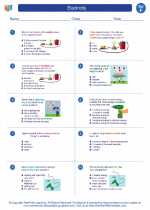Lichens: An Overview
Lichens are unique organisms that arise from a mutualistic relationship between a fungus and an alga or a cyanobacterium. The fungus provides structural support and protection, while the alga or cyanobacterium provides nutrients through photosynthesis. This partnership allows lichens to thrive in a wide range of environments, from arctic tundra to deserts.
Structure of Lichens
Lichens have a characteristic structure consisting of a thallus, which is the main body of the lichen, and often a fungal mycelium that provides support. The thallus can take on various forms, including crustose (crusty), foliose (leafy), and fruticose (shrubby).
Ecological Importance
Lichens play a crucial role in their ecosystems. They contribute to soil formation, serve as a food source for various organisms, and can indicate air quality. Some lichens are also used in traditional medicine and dyes.
Study Guide
- What is a lichen?
- Describe the mutualistic relationship between the fungus and the alga or cyanobacterium in lichens.
- Explain the structure of lichens, including the thallus and fungal mycelium.
- Discuss the ecological importance of lichens and their role in ecosystems.
- Give examples of different forms of lichens and their adaptations to different environments.
◂Science Worksheets and Study Guides Sixth Grade. Electricity

 Activity Lesson
Activity Lesson
 Worksheet/Answer key
Worksheet/Answer key
 Worksheet/Answer key
Worksheet/Answer key
 Worksheet/Answer key
Worksheet/Answer key
 Worksheet/Answer key
Worksheet/Answer key
 Vocabulary/Answer key
Vocabulary/Answer key
 Vocabulary/Answer key
Vocabulary/Answer key
